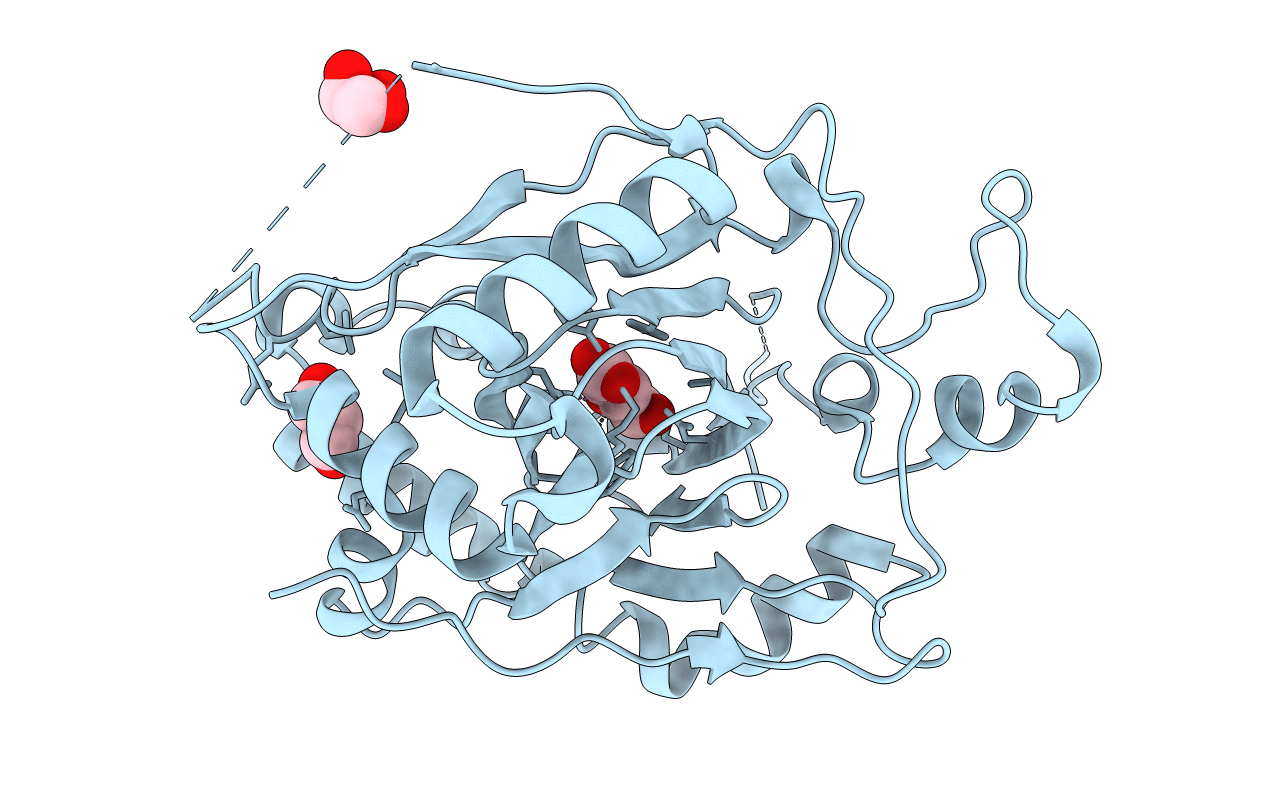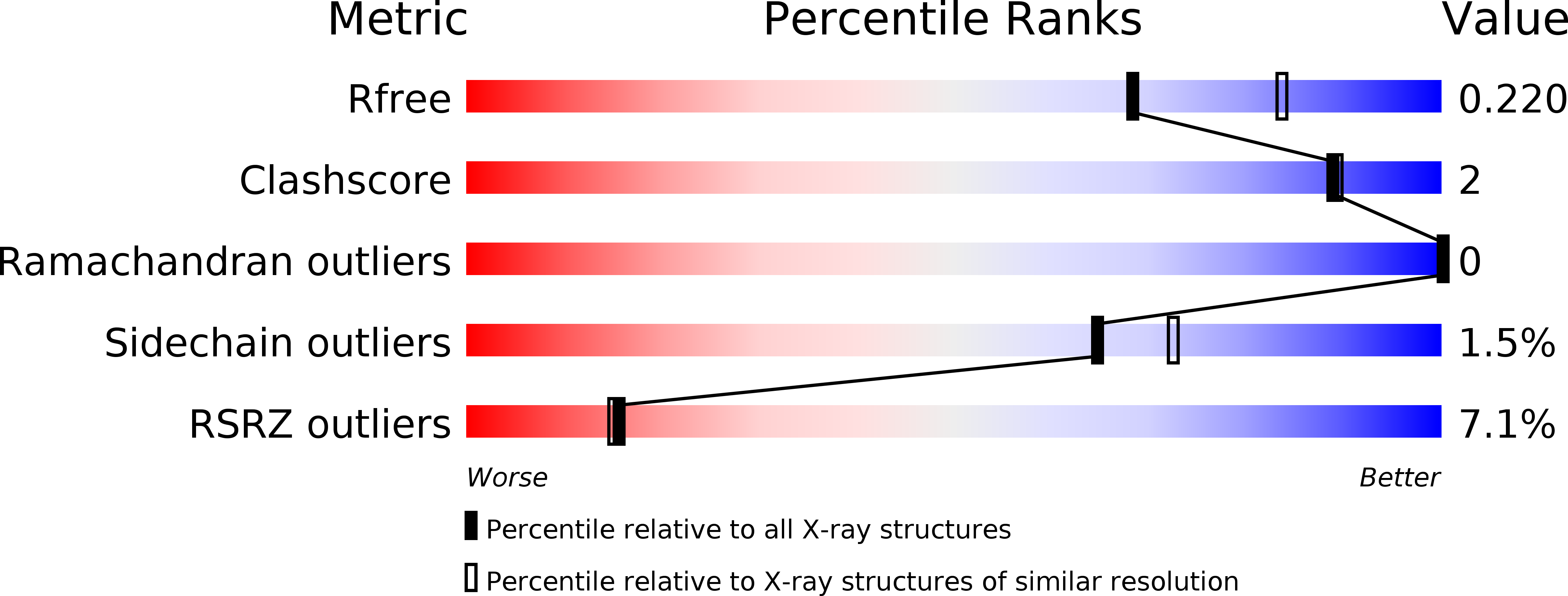
Deposition Date
2015-10-09
Release Date
2015-12-16
Last Version Date
2024-03-06
Entry Detail
PDB ID:
5E6H
Keywords:
Title:
A Linked Jumonji Domain of the KDM5A Lysine Demethylase
Biological Source:
Source Organism:
Homo sapiens (Taxon ID: 9606)
Host Organism:
Method Details:
Experimental Method:
Resolution:
2.24 Å
R-Value Free:
0.21
R-Value Work:
0.17
R-Value Observed:
0.18
Space Group:
C 1 2 1


